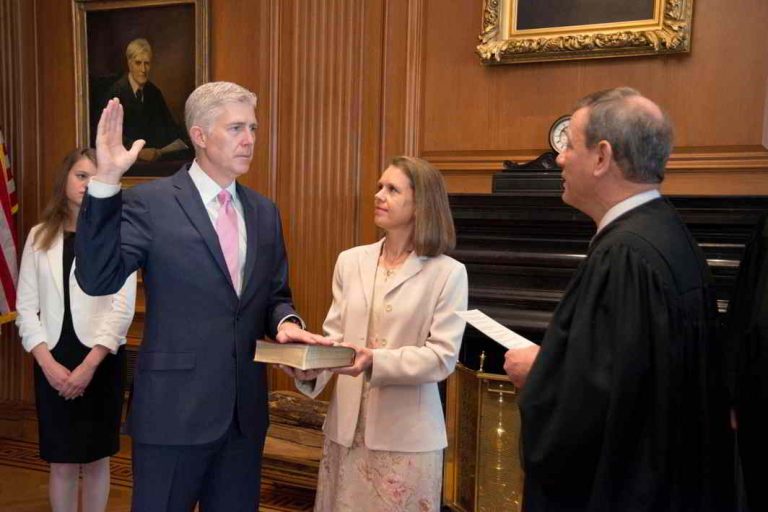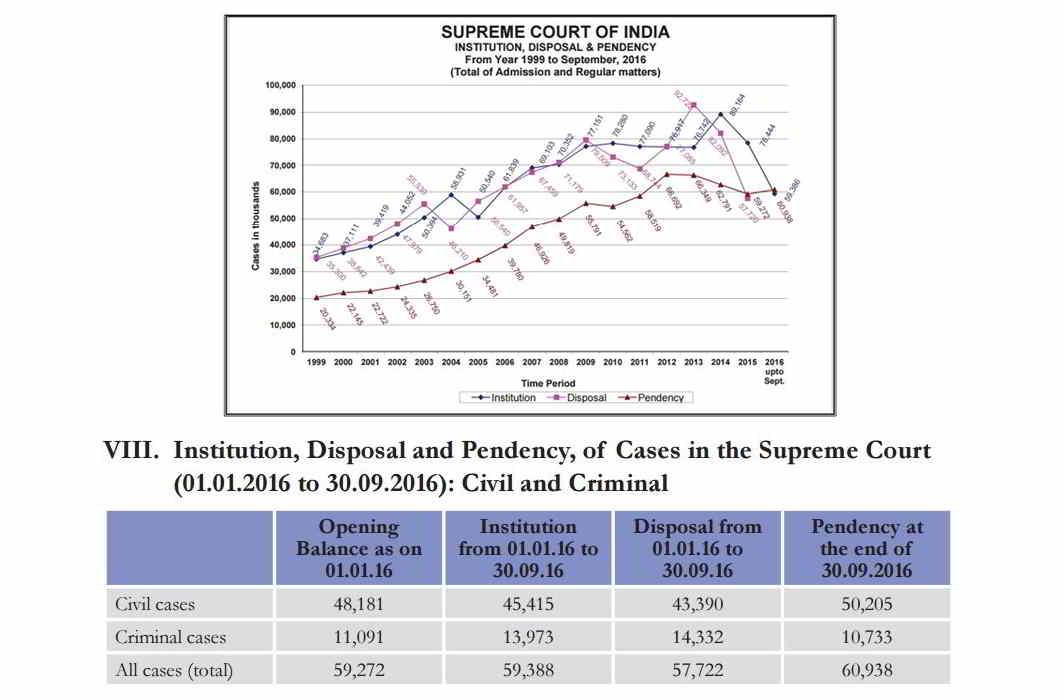
~By Sujit Bhar
The executive and the judiciary have remained so interlinked – even in countries where the separation of the ‘church’ and the state has been established centuries ago – there is probably no case study possible in isolation, bereft of external influence.
Without demeaning the authority of the judiciary or the state, why would things come to the fore in the selection/nomination of a Supreme Court judge, be it in the US or in India? Much has been talked about the appointment of the 49-year-old Neil Gorsuch as the new US Supreme Court Judge, filling the vacancy left in the death of the conservative Antonin Scalia.
Frankly, going by his track record, he may not prove to be such a bad choice by President Donald Trump, after all. At least, nobody would call him a White supremacist ideologue.
The situation in India, though, is a tussle between the judiciary and the government, a situation that has left large numbers of cases hanging in limbo, with a pendency situation that can hardly be solved in the next 20 years, even with the full complement of judges in session.
The situation in the US Federal Supreme Court is pretty different. It’s Supreme Court has nine judges nominated by the President and confirmed by the Senate. They are appointed for life.

Chief Justices in India have never had long terms, being promoted through the system and retirement age often cutting short glorious terms. In a system as in India it would not be possible to have life-terms for Supreme Court judges, but maybe it would be a possibility to fix a three-four year term for each Chief Justice, irrespective of age. Technically, this should be a term in which he or she can see through the course of a case and deliver a balanced judgement.
Personal opinions really would cut little ice in these high-powered corridors, but this also brings to light the selection process of a judge of the Supreme Court in India. While the President has a big say in selecting his choice for the Supreme Court in the US, he has to depend on the Senate for reaffirming his choice. The Senate can get stubborn, as it did in this case, where the US has a rather interesting option of going ‘nuclear’, or to have a shorter, more concentrated voters’ list of supporters. When the choice of Gorsuch bounced off the full Senate voting table, this ‘nuclear’ option was resorted to and Gorsuch was through. Trump boasted how he did it, and within the first 100 days too.
While the President has a big say in selecting his choice for the Supreme Court in the US, he has to depend on the Senate for reaffirming his choice. The Senate can get stubborn, as it did in this case, where the US has a rather interesting option of going ‘nuclear’, or to have a shorter, more concentrated voters’ list of supporters.
The possibility of Indian courts solving their pendency issue quickly is far-fetched. According to several chief justices even if all courts have their full quota of judges, this will take decades.
If we study the institution, disposal and pendency of cases in the Indian Supreme Court till September 2016, we see a curve that initially was optimistic in the disposal (2013) rising to 92,722, against institution of 76,742, but then disposal slumped to 82,092, while institution soared to 89,164. Pendency, however, remained high at around 66,000 during those periods with almost all slumping to around the 60,000 mark in September.
Hence it is not just a case of resolution of pending cases, but also of the handling of newly instituted cases at the Supreme Court, most of which are government related.
How is Gorsuch’s nomination related to this? Apparently not, though if one cares to look carefully, the US President – right or wrong is another issue – and the Republicans found a way to push through a crucial appointee and settle a dispute once and for all.
The Memorandum of Procedure that has been the cause of battle between the Supreme Court Collegium (a body that is scheduled to oversee appointment of high court and Supreme Court judges in India) and the executive probably does need a change. Somewhere the public deserves judgement and not delays.
One can take a leaf out of Trump, for a change.

